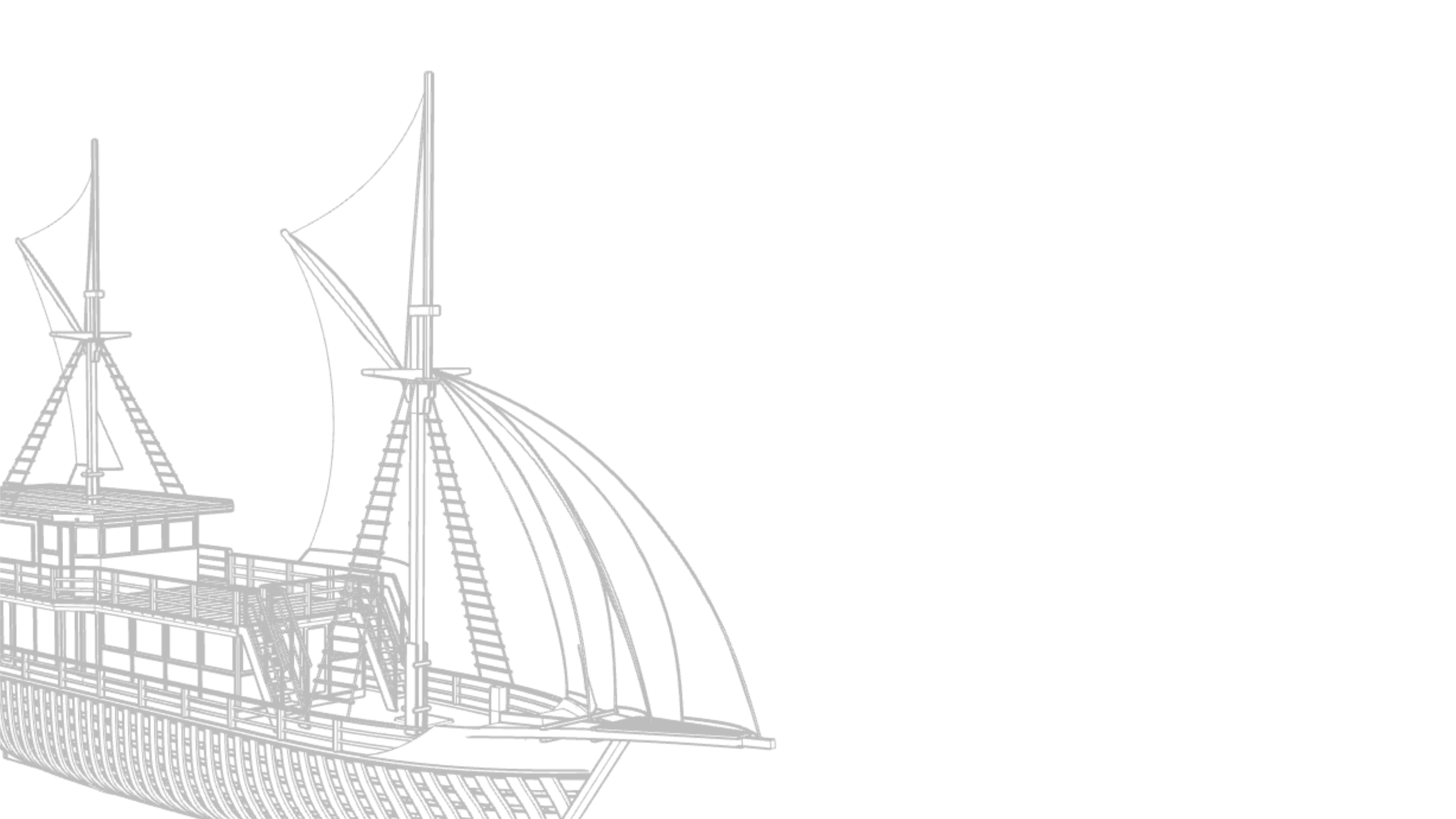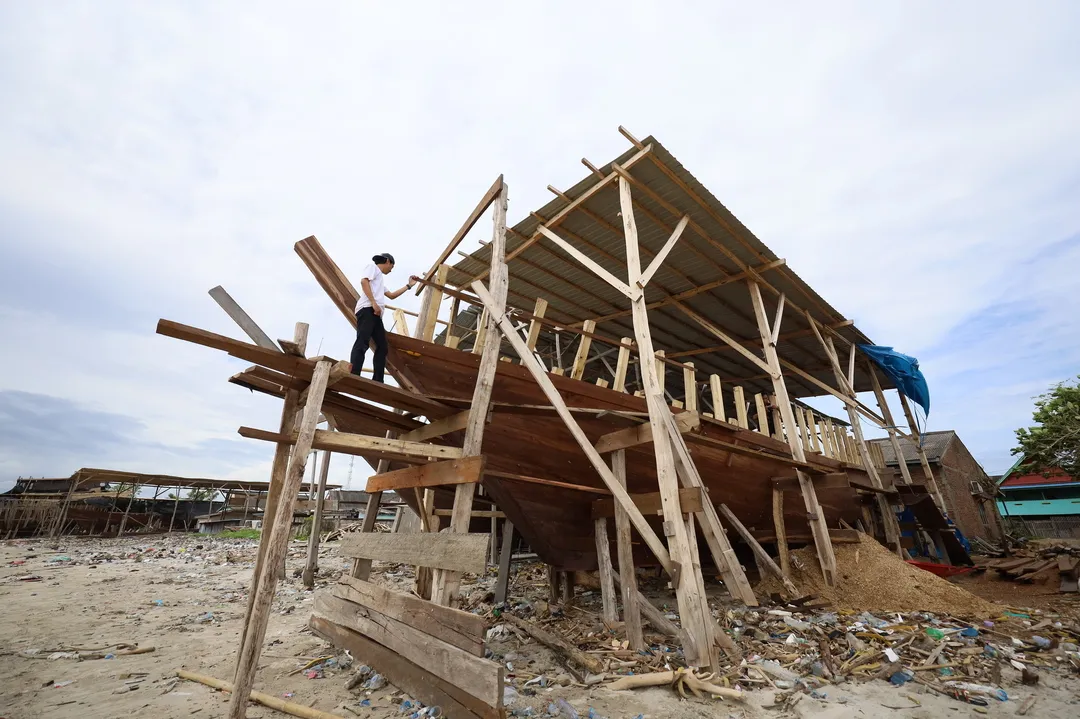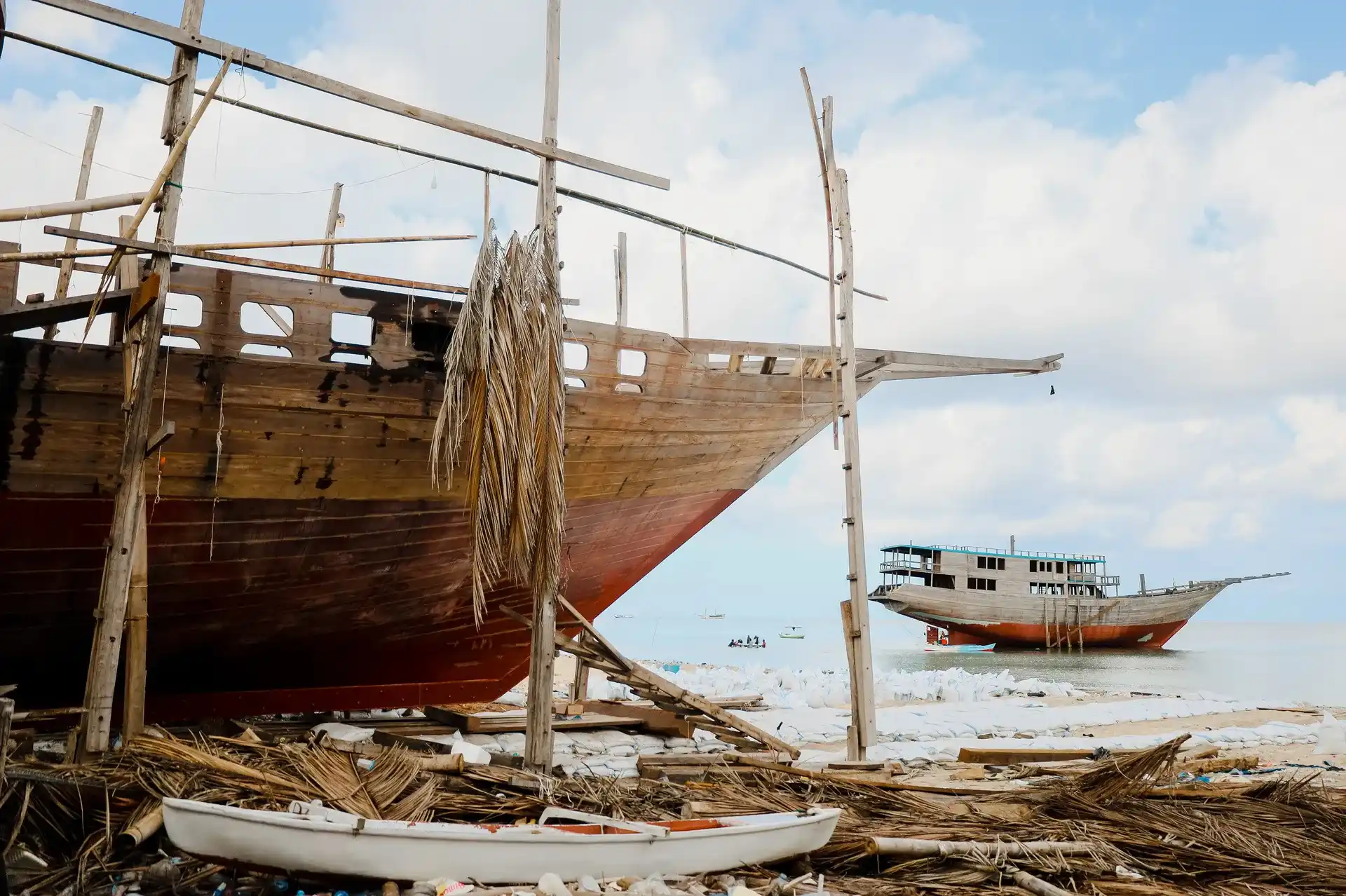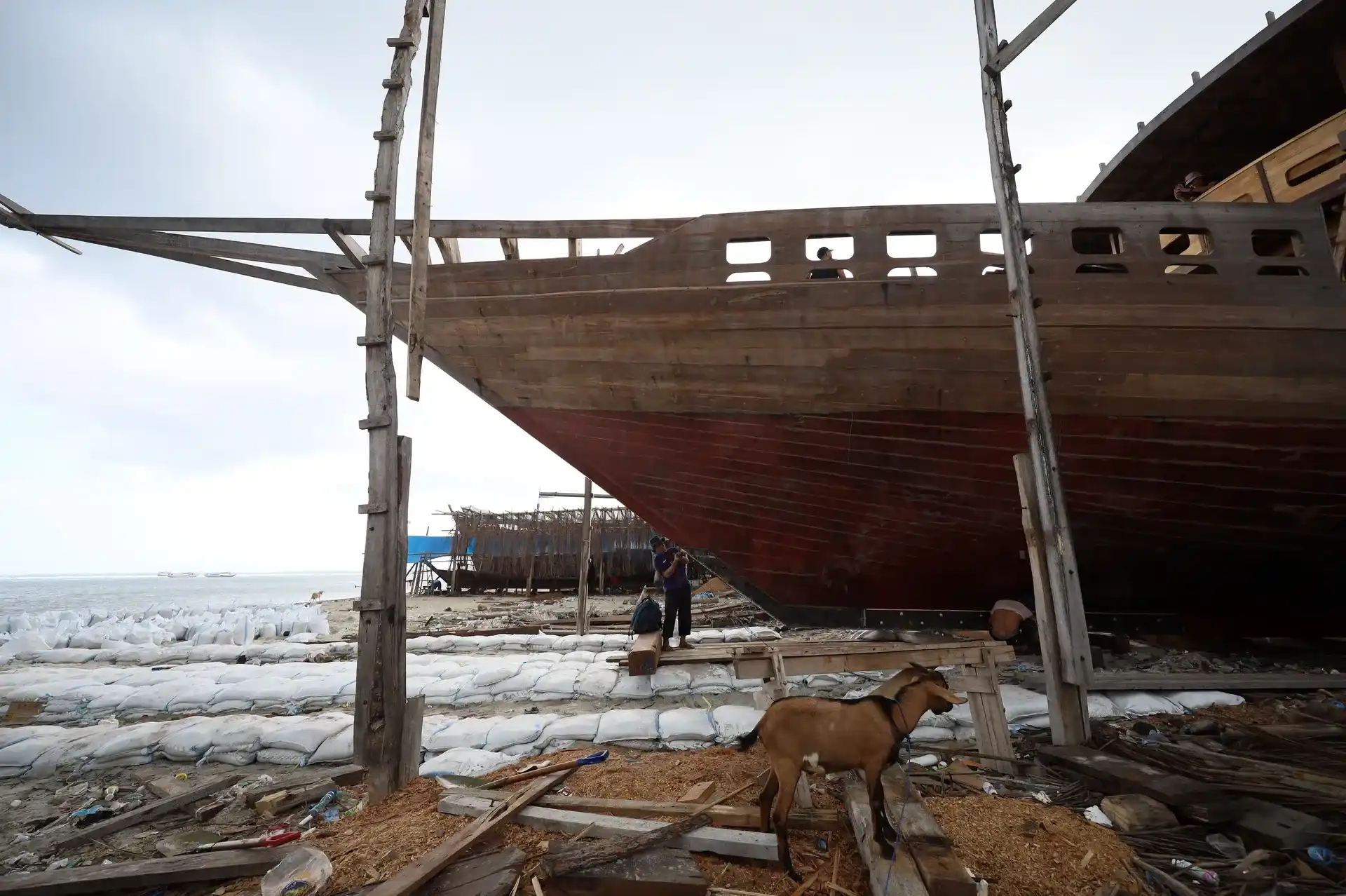6 Types of Wood for Phinisi Boats in Indonesia
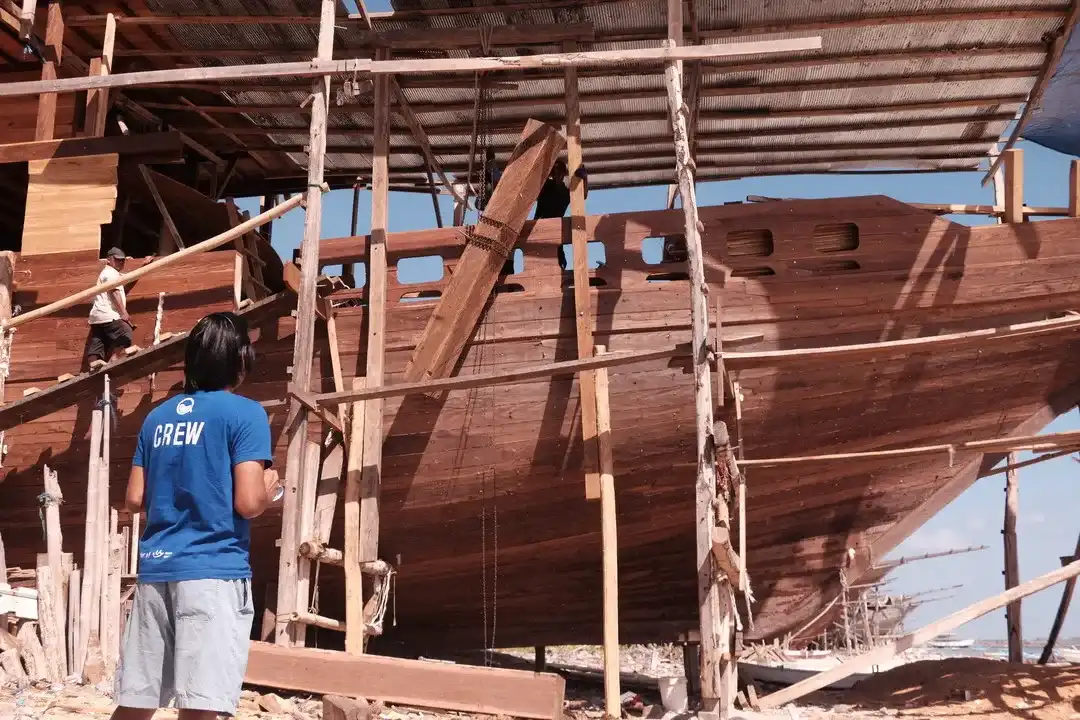
The types of wood for Phinisi Indonesia reflect more than just structural choices. They carry centuries of tradition, maritime resilience, and cultural meaning.
Each wood species, from ironwood to bitti, contributes unique strength, flexibility, and even spiritual energy to the ship. Builders choose not only based on function but also ritual significance. Let’s explore the woods that bring Phinisi boats to life.
What Kind of Wood Is Used to Build a Phinisi?
In traditional Phinisi construction, choosing the right wood is critical. It is not just for strength and durability, but also for harmony with nature and cultural beliefs. Each type of timber plays a specific role in the boat’s structure, based on its characteristics and availability in the region.
Below are the core woods chosen by the shipwrights of Bulukumba and Tana Beru.
1. Ironwood (Kayu Ulin)
Renowned as one of the hardest and most durable woods in Southeast Asia, ironwood (locally known as kayu ulin) is considered sacred and essential in shipbuilding. Its nickname is “the wood that sinks”.
This comes from its incredible density, which is so great that it won’t float in water. Builders use it for foundational structures like the keel, spine, and main beams.
It is also resistant to termites, rot, and saltwater corrosion, making it ideal for life at sea. Builders highly value it for strength, longevity, and spiritual grounding.
2. Teak (Kayu Jati)
Teak is one of the most prestigious and highly sought after woods in maritime construction. Beloved for its golden hue and naturally oily surface, teak offers both beauty and unbeatable durability.
It is often chosen for decking, cabin interiors, and visible finishes due to its rich grain. Its natural oils make it resistant to insects and decay.
The wood is smooth to work with, yet hard enough to last decades in tropical marine environments.
Read Also: The History of Phinisi Boats from Bulukumba: Indonesia’s Timeless Sail
3. Bitti Wood (Kayu Bitti)
Unique to Sulawesi and strongly associated with Bugis Makassar boatbuilding tradition, Bitti wood is a flexible yet sturdy timber. It has long been a staple in Phinisi hull design.
Builders select it for parts that require bending, like the hull and ribs. It offers a good balance of workability and strength, making it ideal for shaping.
This wood also holds symbolic significance, passed down through generations of local builders.
4. Meranti
Meranti is a lighter and more accessible tropical hardwood. It is often used in the supporting roles of Phinisi construction. While not as strong as ironwood or teak, it remains practical and cost effective.
It is applied in areas that don’t bear much structural weight, such as interior walls or partitions. Meranti is easier to cut and shape, which speeds up aspects of the build process.
It also helps preserve more precious woods by filling non essential roles.
5. Nyatoh
Nyatoh serves as a strong alternative when more premium timbers are scarce or too costly. It's appreciated for its versatility and medium weight, making it suitable for both utility and aesthetics.
Builders use it in framing, interior structures, and furniture on the boat. It also takes stain and polish well, adding to its value in decorative work.
Nyatoh is often utilized in combination with other woods depending on availability.
6. Mangrove Wood (Rhizophora spp.)
Though not a structural star, mangrove wood plays a quiet but critical role in traditional boatbuilding. Known for its natural resilience in wet environments, it’s commonly used for smaller but essential parts. It is frequently used for pegs, dowels, lashings, and connecting joints.
This wood is naturally rot resistant, especially in brackish water conditions. It is also sourced sustainably from nearby mangrove forests, maintaining ecological balance.
Why Are These Woods Chosen?
Each type of wood plays a distinct role. They are chosen not only for strength and durability but also for their origin, symbolism, and spiritual meaning. These specific woods are favored for several key reasons.
1. Indigenous to Indonesia
Most of the woods used, such as ironwood (kayu ulin), teak (jati), and bitti, are native to Indonesia. They grow abundantly in the forests of Sulawesi and Kalimantan.
Their local availability ensures sustainability, supports regional economies, and continues centuries old ecological knowledge. Builders often harvest timber with care and timing, following cycles that respect forest regeneration.
2. Exceptional Marine Durability
These woods are naturally resistant to saltwater, pests, and rot. This is critical for ships that may spend years at sea. Ironwood, for example, is incredibly dense and water resistant, making it ideal for the keel and main frame.
Teak’s natural oils protect against decay, while bitti wood offers just the right balance of strength and flexibility for shaping curved hulls.
3. Spiritual and Symbolic Value
In traditional belief systems, some woods are thought to carry soulful or sacred energy. Ulin and bitti, in particular, are often chosen for core structural parts. This is because they are believed to hold protective spiritual power.
Builders offer prayers and blessings during timber selection, honoring the life force of the tree before it becomes part of the ship.
4. Ritual Based Selection
Wood selection can also depend on ritual significance. Certain types of timber are preferred for specific phases of construction, like the keel or the mast, based on ancestral knowledge and cosmology.
Some builders believe that using the wrong type of wood, or harvesting it on the wrong day, could bring bad luck to the voyage ahead.
Read Also: Inside the Maritime Heritage of Bulukumba: Where Phinisi Ships Are Born
How Do Builders Choose the Right Wood?
The selection of wood for building a Phinisi isn’t random. It follows a thoughtful process rooted in tradition and function. Builders choose specific timber types based on several key factors.
1. Function of Each Boat Component
Heavy, dense woods like ironwood are ideal for the keel and base, while more flexible varieties like bitti are preferred for shaping the hull or framing curved areas.
2. Availability and Sustainability
Most woods are sourced locally from Sulawesi’s forests, chosen based on what is abundant and harvested in an ecologically respectful way.
3. Season and Wood Quality
The timing of cutting and curing affects the wood’s strength and resilience. Dry seasons are preferred to allow timber to season naturally before use.
4. Ritual Guidance and Ancestral Knowledge
Elders and spiritual leaders often guide the material selection based on traditional rituals, cosmology, and the boat’s symbolic purpose. This ensures that the craft honors both nature and heritage.
The Role of Wood in Spiritual & Ritual Practice
In Phinisi shipbuilding, wood is far more than a building material. It holds deep spiritual and ceremonial meaning. Every piece is treated with reverence, woven into cultural beliefs that honor both the forest and the sea. Here is how this reverence is shown.
1. Wood Is Blessed Before Use
Before any timber is shaped or assembled, rituals are performed to ask permission from nature and the spirits believed to dwell within the wood. Offerings and prayers are made to ensure safety and harmony throughout the construction.
2. Certain Woods Are Chosen For Their “Soul”
Some species, like bitti or ulin, are believed to contain a “jiwa” (soul or spirit) that harmonizes with the purpose of the vessel. These woods aren’t just structurally sound; they’re spiritually aligned with the Phinisi’s role as a seafaring guardian.
3. Taboos Govern When and How Timber Is Harvested
Builders follow strict cultural rules about when trees can be cut, avoiding “bad days” or certain lunar phases. Timber must be felled respectfully, often with ritual chants, to prevent misfortune and show respect to nature’s forces.
Can Voyagers See These Woods in Use Today?
Yes. Voyagers can see these remarkable woods brought to life at Riara Marine and other traditional shipyards in Tana Beru, Bulukumba.
These aren't displays behind glass. They are active workspaces where heritage is still carved, joined, and sailed.
- At Riara Marine, you can watch as raw ulin, bitti, and teak timbers are transformed by hand into majestic Phinisi boats.
- Visitors may see logs being split, hulls being framed, and builders using traditional tools like adzes and chisels on sacred wood.
- You’ll gain insight into how each type of wood is selected, honored, and used for specific parts of the vessel, from keel to mast.
This is a rare opportunity to witness centuries old knowledge in action, where every wooden plank carries both practical strength and cultural meaning.
Read Also: How Long to Build a Phinisi? Inside Indonesia’s Timeless Craft
Visit Riara Marine in Bulukumba to Experience Boatbuilding
Discover how traditional Indonesian boatbuilding begins with the wood itself. At Riara Marine, you’ll witness how master craftsmen transform raw logs into powerful Phinisi vessels using time honored knowledge of local timber.
- Explore the types of wood used in Phinisi construction, including ironwood (Kayu Ulin), teak (Jati), bitti, and mangrove. Each is selected for strength, flexibility, and spiritual value.
- See how timber is cured, cut, and shaped by hand, using tools like adzes and chisels with astonishing precision, all without blueprints.
- Learn the meaning behind each wood’s role, from the keel to the hull and deck, guided by cultural rituals and elder wisdom.
- Try your hand at shaping wood or assisting in traditional joinery, gaining a deeper appreciation for materials once revered as sacred.
- Understand the rituals tied to tree cutting and wood blessing, a practice that shows how the soul of the ship begins in the forest.
Ready to experience Boat Construction from sacred timber to seaworthy tradition?
Book your journey at Riara Marine and be part of Indonesia’s living maritime heritage!
